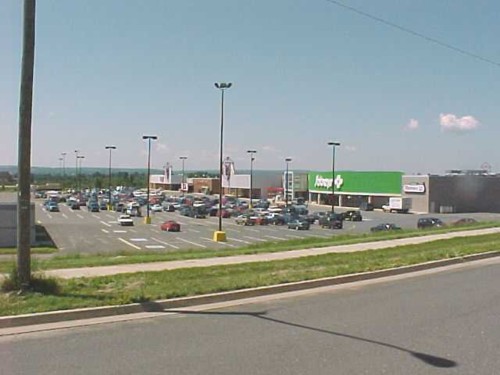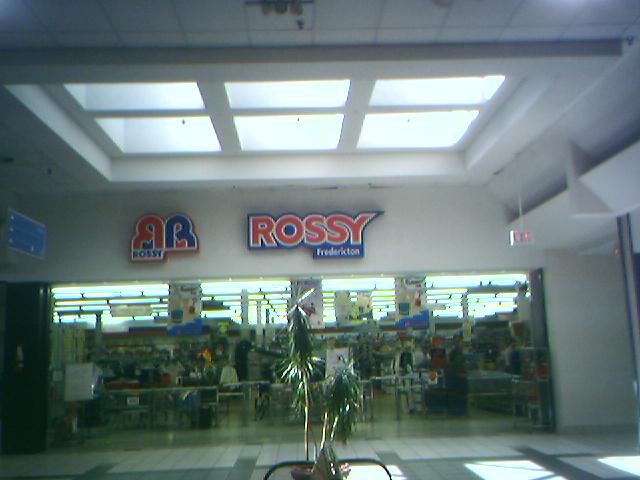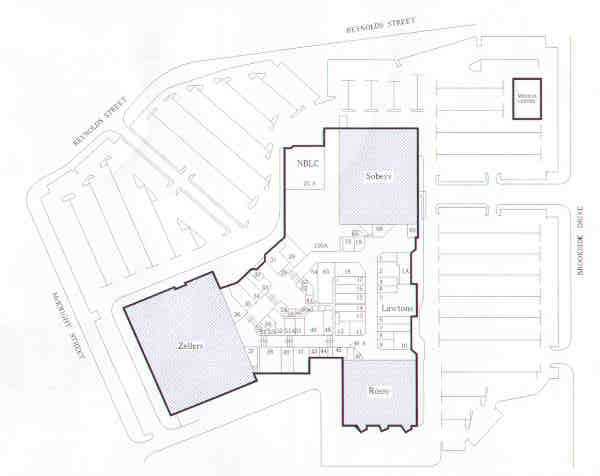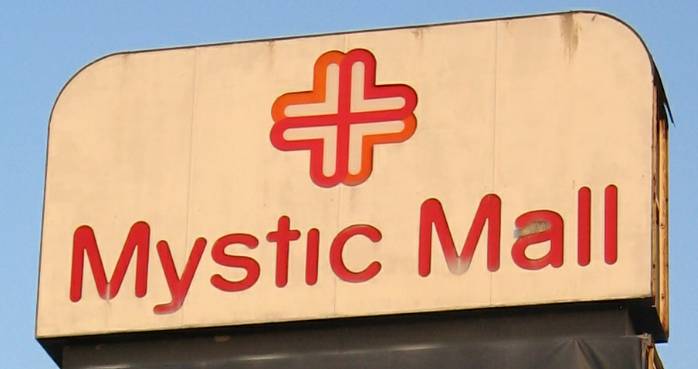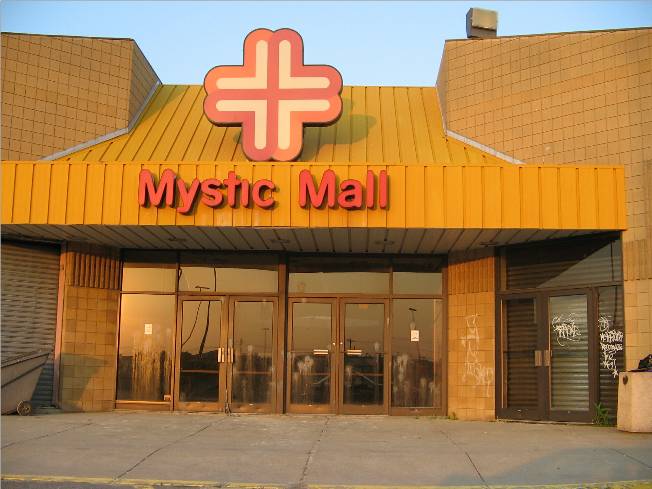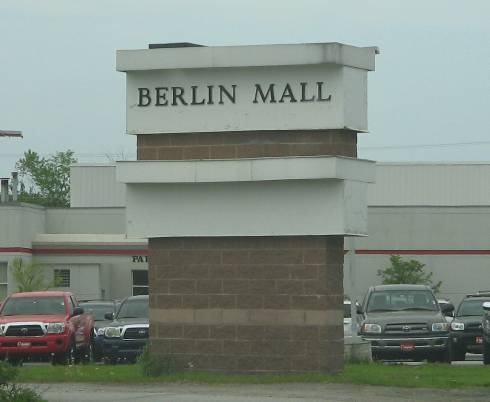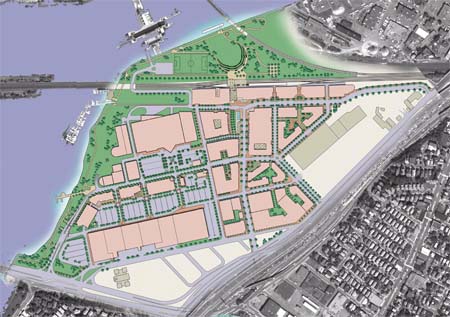When we created this blog, the main purpose was to study retail history–to document the way shopping centers are now or were in the past, so that people in the future could have some record of them. Unfortunately, we’ve arrived a bit late–hundreds of malls throughout the United States have already been shuttered, and we don’t have pictures to remember all of them. The Newport Mall is one.
I need to preface my entry about the Newport Mall with a personal anecdote: I was born and raised in the Aquidneck Island town of Middletown, Rhode Island, in a house about three miles from this particular mall. Growing up, the Newport Mall was never particularly successful, and any serious shopping trip demanded a trek off of the island. Since this was the ’80s, malls seemed like a true cultural emblem. I learned about them through TV sitcoms, Fast Times at Ridgemont High and, later, Saved By the Bell, and always felt that we were somehow missing out on this cultural epicentre because our own mall was never able to ascend past being “dead.”
Of course, this isn’t entirely true: Newport is a thriving coastal tourist city, and courts millions of visitors a year. A stretch of Thames Street a little over a mile long in downtown Newport houses hundreds of stores and restaurants ranging from national chains to local institutions, and it is (and always has been) the true cultural and retail center of this area. Apart from the restrictive geography of the island, this is truly why the mall didn’t make it, especially since downtown Newport was the location of choice for most of the better chains that would’ve made their home in an enclosed mall elsewhere.
Still, the allure of the elusive “mall” was probably a big part of why I became so enamored with them, and the fact that my own hometown mall was a “dead mall” likely has something to do with why I became so fascinated with the failure of shopping centers in general.
The Newport Mall opened in 1984. From its birth, it was kind of a hack-job; the developers merely enclosed an existing 1950s (or 60s?) vintage shopping center on J.T. Connell Road (Connell Highway to the locals) and added some extra sales space. The center’s original main anchor, WT Grant’s, had folded and was replaced with a JCPenney store (complete with a sit-down restaurant that had a separate mall entrance, a true rarity), and Peerless (one of the many local Providence downtown department store chains) opened a small outlet at the far end of the center. The center of the mall had been anchored by a Food Mart store with a garish lemon-and-lime color scheme that was distinctly of its era. When the mall was enclosed, Food Mart shoppers were forced to somewhat awkwardly wheel carts of groceries through the mall to get to their cars as the supermarket only had access into the mall. It would be replaced by a TJMaxx not long after the mall opened.
Consisting of about 300,000 square feet and with room for around 40 stores, the mall was not large but was relatively spread out. The decor was decidedly spartan, consisting of exposed steel beams in the ceiling, a large glass atrium at center court in front of TJMaxx, and relatively standard-issue planters and benches throughout the mall. The Newport Mall was also not located in one of the better parts of the city, surrounded on all sides by big city-style decaying public housing projects, and shoplifting was a terminal problem. During the peak of its life (around 1990 or 1991), the center housed about 30 stores, including Record Town, Waldenbooks, Foot Locker, Afterthoughts, Hallmark, Fashion Bug, and other stores that tended to flock to smaller malls. Unfortunately, throughout the center’s life, nearly every store that did open in the mall was located on the wing between JCPenney and TJMaxx. Bar longtime tenant Fashion Bug, no tenants were ever located between TJMaxx and Peerless, and at its best the mall reached about 60% occupancy. The Peerless store itself would not last long, closing a few short years after the mall opened and being replaced in the early ’90s by a West Marine that shunned the enclosed portion of the mall entirely, opening only into the parking lot.
The mall was barely able to survive throughout its entire 14-year existence. The fatal blow came in 1997 when JCPenney announced they were going to close their store at the mall on December 24, 1997. When the Christmas sales were completed, the store went dark and nearly every mall tenant followed shortly thereafter. By the following summer, only Foot Locker, Waldenbooks, TJMaxx, West Marine, and Fashion Bug remained. In fall of 1998, the enclosed portion of the mall (ironically the exact area that was added in the 1984 expansion) was demolished and the plaza was opened back up to the parking lot. The southern end of the mall was also expanded and reconfigured, and an entrance was added to Admiral Kalbfus Road (RI-138).
Because the mall began its life as an outdoor shopping center and is now again a strip mall (titled RK Newport Towne Center), anyone who visited the site today would find no trace of the center’s era as an enclosed mall. Anchored by Wal-Mart (who filled the former JCPenney), Super Stop and Shop (who demolished most of the always-empty southern wing), West Marine, Old Navy, a 99 Restaurant, and a slate of smaller tenants, it has been relatively successful in the past half-decade. Interestingly, TJMaxx and Foot Locker are the only two tenants who continue to operate in the exact same place they were located when the center was still enclosed.
Because the Newport Mall closed seven years ago and was never well-loved, I don’t have any photographs of the inside or outside. The best I can find is the black and white satellite view below, which shows how the enclosed addition (with the gray roofline with the white border) was grafted onto the existing shopping center (much of which has the black or white roofline). If you happen to know of some, I would greatly appreciate if you would email me and let me know.
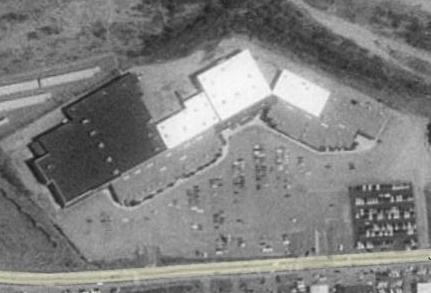

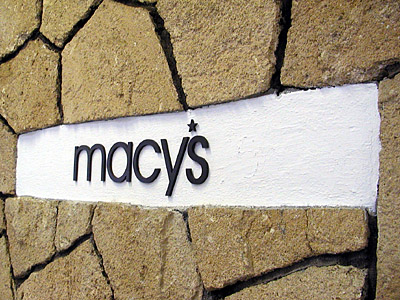
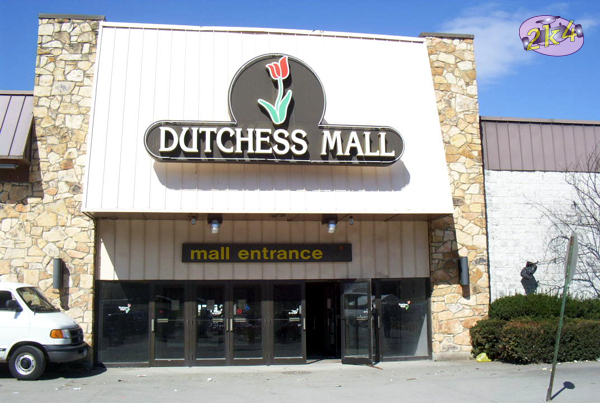









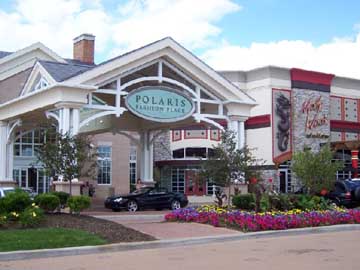
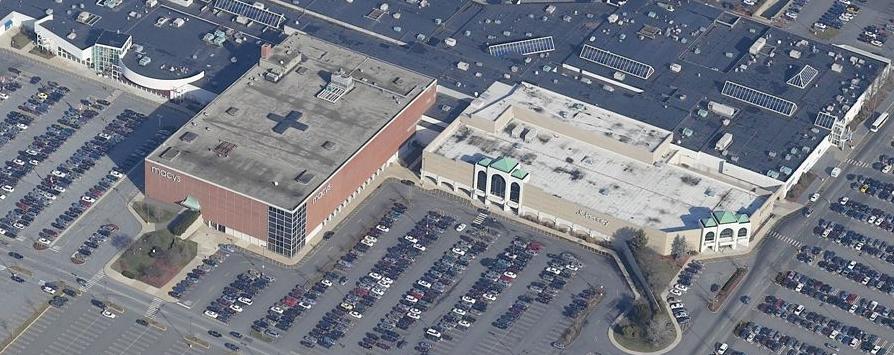
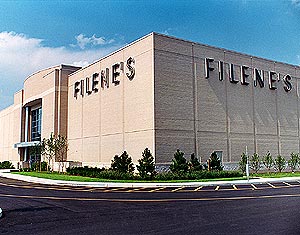 There’s also the problem that many of the shells left dark–whether they were originally a May or Federated space–are far too large by modern department store standards. In New England, Macy’s has tended to prefer to keep the smaller and more modern Filene’s spaces over their own spaces, which were all acquired from Jordan Marsh a decade ago. Many of these former Jordan Marsh stores had in excess of 300,000 or even 400,000 square feet, and sometimes featured four levels of sales floors fronting a one-level mall (The Northshore Mall in Peabody, Mass. and the Warwick Mall in Warwick, RI both spring to mind). There just aren’t any chains in expansion mode that would want to occupy a space like this anymore, so the buildings will almost certainly have to come down.
There’s also the problem that many of the shells left dark–whether they were originally a May or Federated space–are far too large by modern department store standards. In New England, Macy’s has tended to prefer to keep the smaller and more modern Filene’s spaces over their own spaces, which were all acquired from Jordan Marsh a decade ago. Many of these former Jordan Marsh stores had in excess of 300,000 or even 400,000 square feet, and sometimes featured four levels of sales floors fronting a one-level mall (The Northshore Mall in Peabody, Mass. and the Warwick Mall in Warwick, RI both spring to mind). There just aren’t any chains in expansion mode that would want to occupy a space like this anymore, so the buildings will almost certainly have to come down.